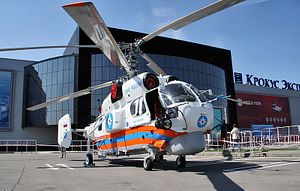Earlier this week, a Russian firm conducted a display of civilian helicopters in Thailand as part of a broader regional tour. Though the display was an expected interaction and just one development in relations between the two countries, it nonetheless highlighted the ongoing activity between them in the defense realm.
As I have noted before in these pages, Thai-Russian defense collaboration is hardly new, and Thailand, which is a U.S. treaty ally, has never shied away from fostering ties with other major powers as well, including China and Russia. But cooperation between Moscow and Bangkok has been on the uptick in recent years. Thailand is looking to boost relations with several other nations following a coup in May 2014, which had initially complicated its ties with the United States, while Russia under Vladimir Putin – ambitious abroad and increasingly isolated from the West — has been looking to boost its presence in the Asia-Pacific, including in Southeast Asia.
To be sure, the collaboration explored between the two sides – whether it be specific arms sales or broader areas like defense industry collaboration – has in some cases been slow to manifest and in other cases not done so at all. But there have been some notable gains as well in recent years, whether it be the inking of a military-technical cooperation agreement or deals on defense equipment. Helicopters have been part of that ongoing story, with Thailand looking to buy more helicopters from Russia and talk of a maintenance center being established as well.
This week, the relationship was in the headlines again with a display of Russian helicopters in Thailand. As part of an ongoing series of presentations, demonstrations, and related events in the region, the firm Russian Helicopters presented the Mi-171AZ and Ansat civilian helicopters to Thailand. The demonstrations and presentations, directed at Thai law enforcement agencies and civil aviation representatives, occurred at U-Tapao airfield in Rayong province.
Andrey Boginsky, chief executive officer of Russian Helicopters, said the demonstration was part of a broader effort to cultivate ties with potential customers in Thailand, and that the firm was going to make the first supply of Ka-32A11VC helicopters to the country by the end of 2018. He also added that potential operators were also interested in Ansat ant Mi-8/17-type helicopters in various modifications.
Boginsky did not offer much in the way of specifics in terms of the interested parties and potential deals. Indeed, a more reliable gauge of potential inroads will be the extent to which we see such promotion efforts actually manifest in actual purchases of Russian equipment and other more tangible demonstrations of closer defense ties between the two countries.
































